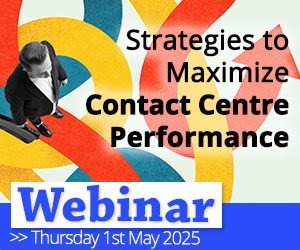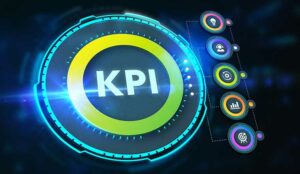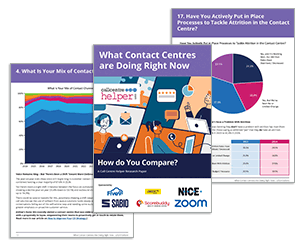Janna Pugh at Five9 explores how to measure customer experience in the contact centre.
Delivering a great customer experience (CX) is essential for every business and its customer service. Happy customers lead to higher retention rates, increased loyalty, and often coveted word-of-mouth referrals. But how do you know if you’re meeting customer expectations?
Measuring customer experience is the key to understanding what’s working and where improvements are needed. It’s also the key to continually improving and adapting your customer service to meet changing customer preferences.
How Customers Define a Great Customer Experience
Before you can start measuring customer experience, it’s important to understand what customers actually expect. An exceptional customer experience is built on three key factors:
- Efficiency – Customers want their issues resolved quickly and easily. Long wait times, transfers between agents, and having to repeat information are major frustrations.
- Empathy – Customers appreciate when agents genuinely listen, show understanding, and provide solutions tailored to their needs.
- Consistency – A seamless experience across different channels (phone, chat, email, social media) ensures customers don’t have to struggle to get help.
When these three elements come together, customers leave interactions feeling satisfied and valued, which is the ultimate goal of every contact centre. But you won’t know how well you’re doing unless you measure it regularly.
How to Measure CX Using Key Metrics for Customer Experience
To ensure you are providing excellent customer service, you need to track the right customer experience metrics. Here are some of the most important ones:
Customer Satisfaction Score (CSAT)
This measures how satisfied customers are with a specific interaction and is typically collected through post-interaction surveys where customers rate their experience on a scale (e.g., 1-5 or 1-10).
Net Promoter Score (NPS)
NPS assesses customer loyalty by asking, “How likely are you to recommend our service to a friend or colleague?” Scores range from 0-10, with higher scores indicating more satisfied customers.
First Call Resolution (FCR)
Resolving an issue in the first interaction is a strong indicator of efficiency. A high FCR means customers don’t have to keep calling back for the same issue.
Average Handle Time (AHT)
While speed is important, balancing it with quality service is essential. A low AHT with high CSAT means agents are resolving issues quickly without compromising on customer satisfaction
Customer Effort Score (CES)
This determines how easy it is for customers to get their issues resolved. The lower the effort, the better the experience.
Call Abandonment Rate
A high abandonment rate suggests that customers are giving up due to long wait times, which can negatively impact their experience.
By tracking these metrics for customer experience, contact centres can identify pain points and make data-driven improvements to enhance service quality. There’s another advantage to tracking customer experience, and that is to coach agents on how to deliver improved experiences.
Ways That Customer Service Agents Can Improve Customer Experience
Customer service agents, both human and AI agents, play a central role in shaping the customer experience. Here are some actionable ways agents can enhance interactions:
Active Listening
Customers want to feel heard. Agents should focus on actively listening, repeating key points to confirm understanding, and responding with empathy. AI agents should be designed to understand context, nuance, and delivery empathetic responses.
Personalization
Using a customer’s name, referencing past interactions, and tailoring solutions to their needs creates a more personalized and engaging experience. Contact centre software should integrate with customer relationship management (CRM) software to automatically deliver these details to agents.
Efficiency and Accuracy
Providing fast, accurate solutions minimizes frustration. Agents should be well-trained on products, policies, and troubleshooting techniques to reduce handling time and improve first call resolution. Contact centre technology like Agent Assist can automatically offer up relevant information and recommended action steps to agents during interactions.
Managing Expectations
If an issue can’t be resolved immediately, setting clear expectations about next steps and timelines helps build trust and reduces frustration.
Continuous Training
Ongoing training in communication skills, conflict resolution, and product knowledge empowers agents to handle interactions more effectively.
Utilizing Customer Feedback
Customer feedback provides direct insights into what’s working and what’s not. Agents should regularly review feedback to refine their approach and improve service quality. Contact centre analytics technology can provide this data on a continual basis.
Final Thoughts
Measuring customer experience is vital for any contact centre looking to improve service quality and customer satisfaction. By tracking key customer experience metrics like CSAT, NPS, and FCR, businesses can gain valuable insights into performance.
At the same time, customer service agents, including AI agents, play a significant role in shaping interactions. By focusing on active listening, empathy, personalization, and efficiency, they can enhance the overall experience.
When contact centres consistently monitor and improve service, they can meet and exceed customer expectations – leading to more joyful customers and a stronger brand reputation.
This blog post has been re-published by kind permission of Five9 – View the Original Article
For more information about Five9 - visit the Five9 Website
Call Centre Helper is not responsible for the content of these guest blog posts. The opinions expressed in this article are those of the author, and do not necessarily reflect those of Call Centre Helper.
Author: Five9
Reviewed by: Megan Jones
Published On: 13th Feb 2025
Read more about - Guest Blogs, Five9







 Five9 empowers organizations to create hyper-personalized and effortless AI-driven customer experiences that deliver better business outcomes. Powered by Five9 Genius AI and our people, the Five9 Intelligent CX Platform is trusted by 3,000+ customers and 1,400+ partners globally. The New CX starts here and it's at the heart of every winning experience.
Five9 empowers organizations to create hyper-personalized and effortless AI-driven customer experiences that deliver better business outcomes. Powered by Five9 Genius AI and our people, the Five9 Intelligent CX Platform is trusted by 3,000+ customers and 1,400+ partners globally. The New CX starts here and it's at the heart of every winning experience. 






























